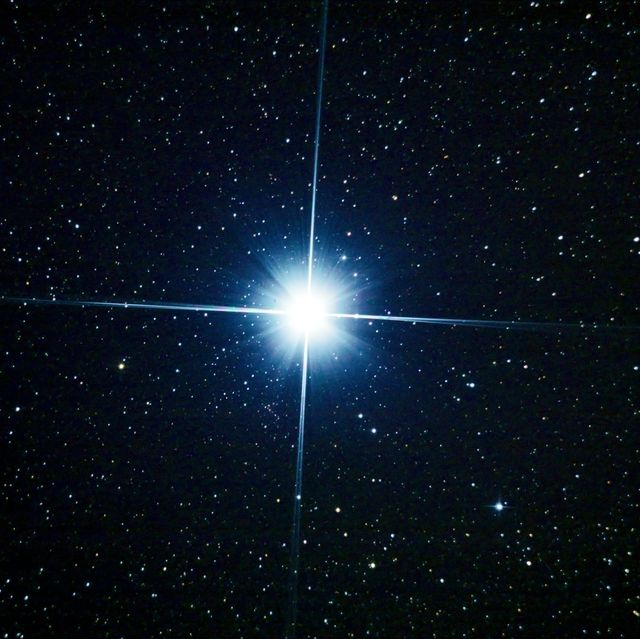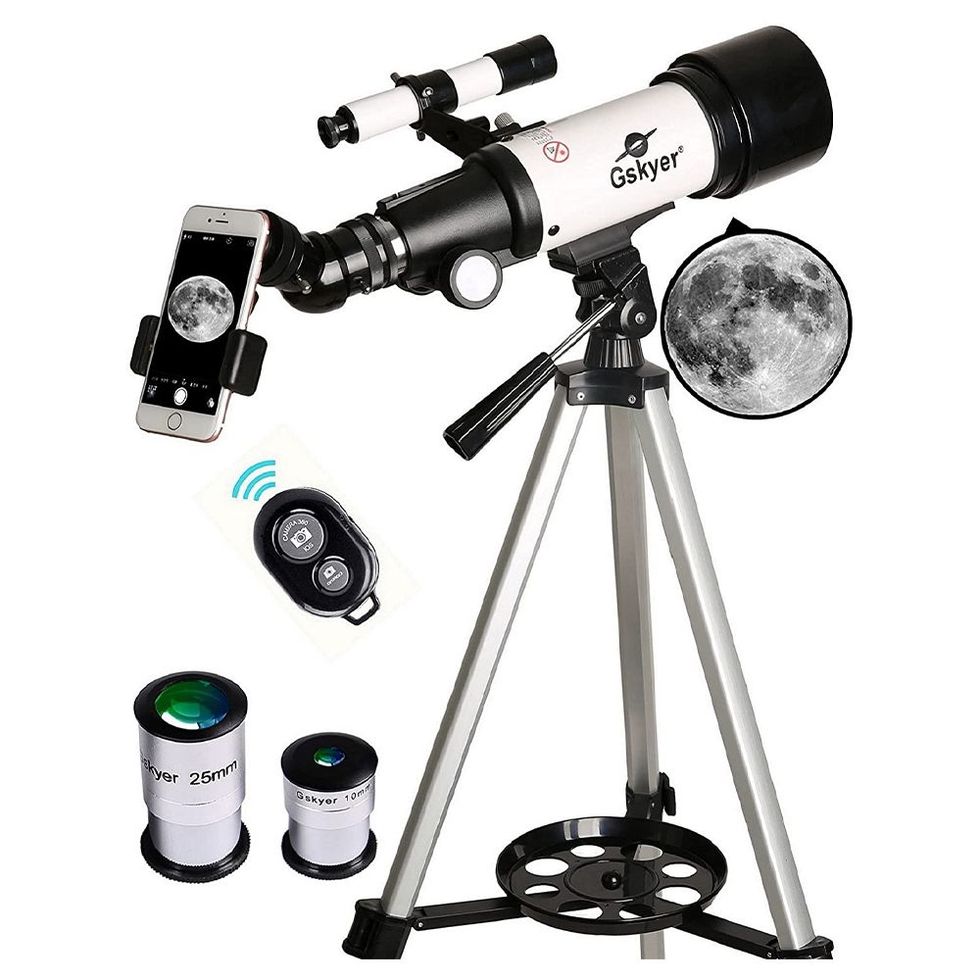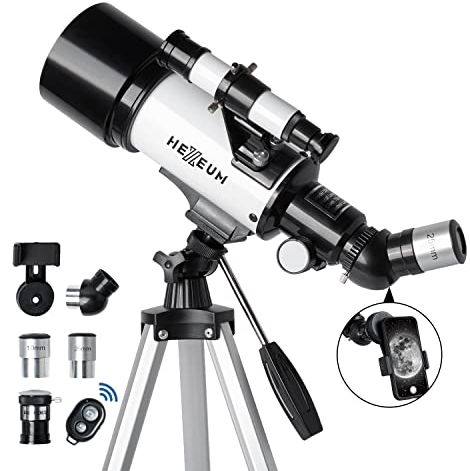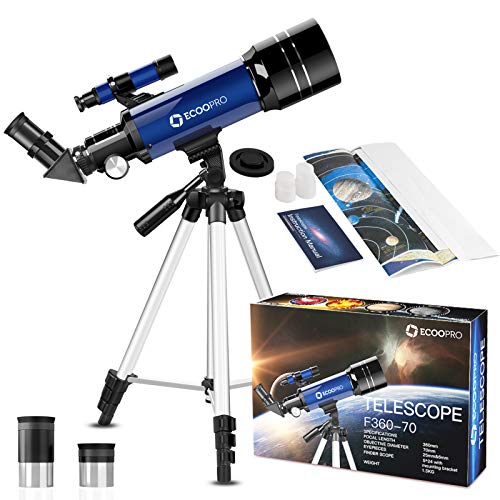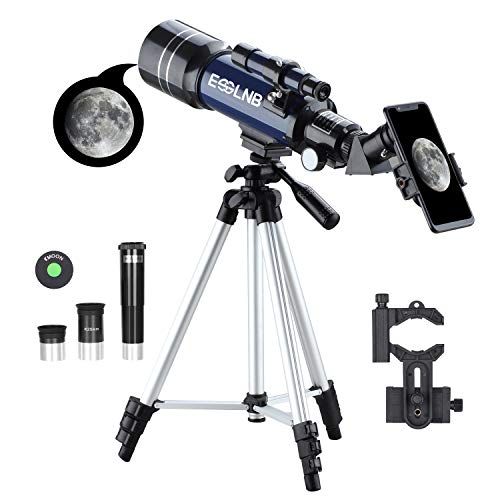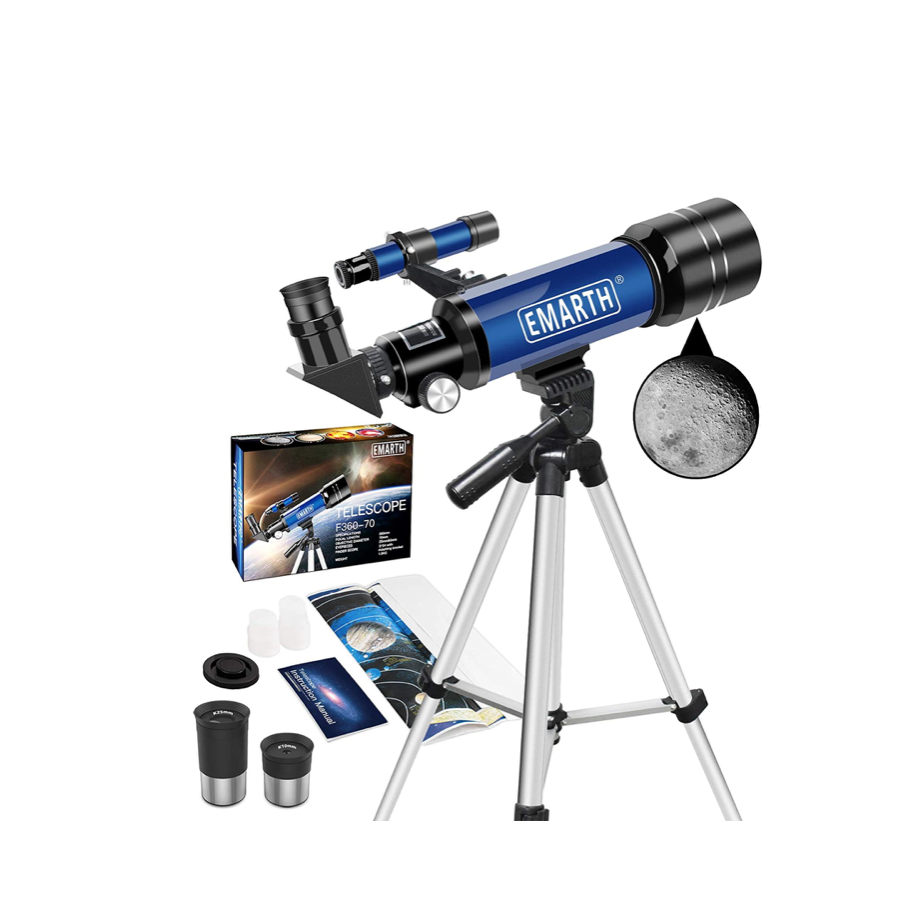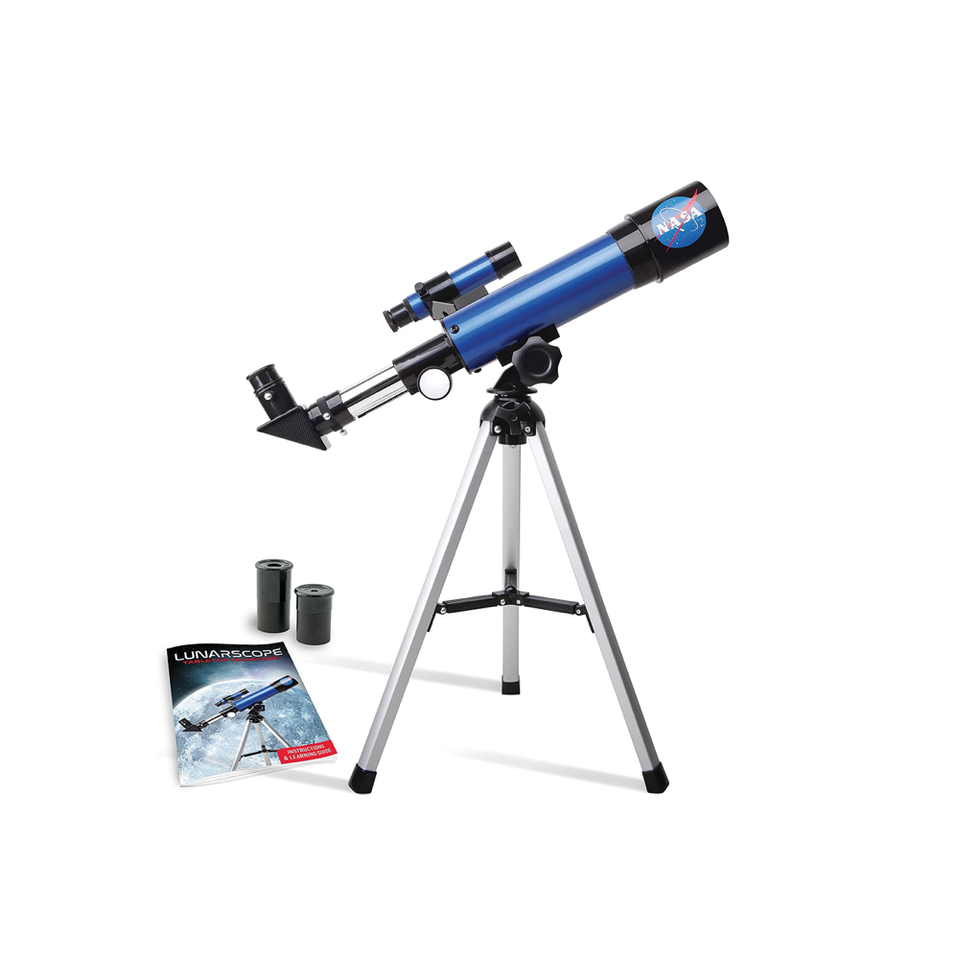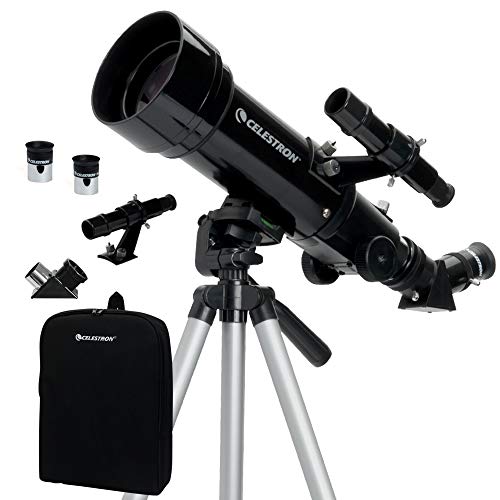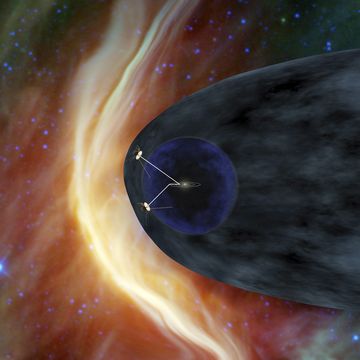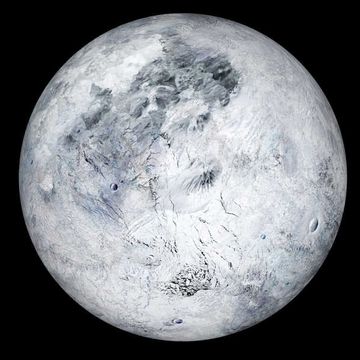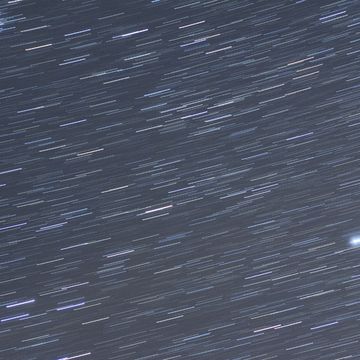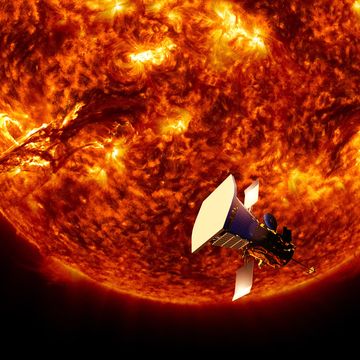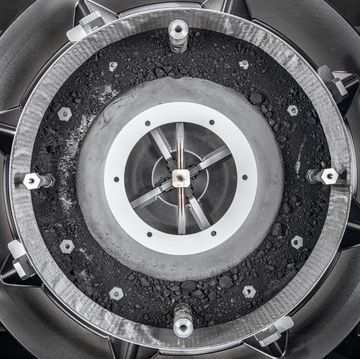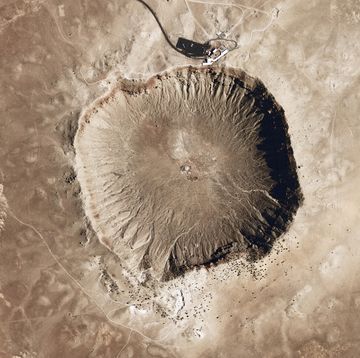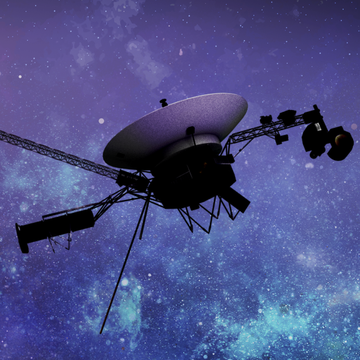- Jupiter and Saturn will appear to align tonight, creating a "double planet" in the night sky.
- It’s the first time since the middle ages the planets have aligned this close.
- You can see this planetary conjunction on the winter solstice, December 21.
For the first time since the middle ages, Jupiter and Saturn will become so close to each other in the night sky that they'll appear as a brilliantly bright "double planet."
You love badass space stuff. So do we. Let's explore the universe together.
You love badass space stuff. So do we. Let's explore the universe together.
Tonight, on the winter solstice (December 21), the solar system’s two largest planets will be visibly on top of each other in the western sky.
If you live in the northern hemisphere, you can observe this planetary conjunction setting in the southwestern sky, shortly after sunset. If you’ve been waiting to take out your telescope, this may be the perfect opportunity. Even if you have an amateur telescope with the right eyepiece, you may be able to see the Galilean moons, the bands of Jupiter, and Saturn’s rings, all in one spectacular view.
🔭The Best Telescopes for Stargazing
The 7 Best Telescopes For Stargazing
Gskyer AZ Astronomical Refractor Telescope
With more than 19,000 reviews on Amazon and a 4.4/5 rating, it's not hard to see why the Gskyer telescope is a fan favorite. This option features a 70mm aperture and fully coated optimal lenses to offer a crisp, clear view of the night's sky. Tech savvy stargazers will appreciate wireless remote, smart phone adapter, and the additional Barlow lens that triples the magnification of each eye piece. Thanks to its adjustable, aluminum alloy tripod, this telescope is suitable for every member of the family.
HEXEUM HEXEUM Telescope 70500
Credit: AmazonIf you're looking for a telescope for kids, or if you're a beginner, this HEXEUM model is a high-quality choice. It comes with an 70mm aperture, plus two eyepieces at 10mm and 25mm each. You'll particularly love that this telescope comes with a phone adapter, which means you can attach your phone to the eyepiece and finally get an amazing photo of the night sky.
ECOOPRO 70mm Astronomy Refractor Telescope
Easy to set up and compact, this telescope comes with a 70mm aperture, two eye pieces, a finder scope, and a tripod. Perfect for astrology or even bird watching, you can set it up on a tabletop with the tripod set to 15 inches, or extend the legs as long as 47 inches. It also comes with a map of the moon and stars for easy reference.
ESSLNB ESSLNB Kids' Telescope
Credit: AmazonESSLNB's telescope is a great choice for kids or beginners. It features a built-in reversing lens, which means that none of the images you see will ever be upside down. Its 70mm lens gives you a wide range of vision, and the telescope's brightness makes everything easy to see. Plus, you can connect your phone and finally take a decent picture of the night sky.
Beginner stargazers will find a lot to love about Emarth's Telescope. Using it is easy: All you need to do is point the tube in the direction of the desired object and take a gander. With two high-quality eyepieces (70mm and 360mm) that provide low- and high-power views of celestial objects, you'll be able to satisfy your stargazing wishes with ease.
NASA Lunar Telescope for Kids
Consider NASA Lunar Telescope the perfect option for avid adventurers or kids who are yearning to spontaneously stargaze. Clocking in at a little over two pounds, this option is lightweight enough to stow in the trunk of your car. This telescope features a multi-coated, extra-low dispersion optical glass to ensure you'll score a clear, perfectly contrasted view of the night's sky.
Celestron 70mm Refractor Telescope
Great for beginners (and priced accordingly), this option features a wide, 70 millimeter aperture that will make stars and constellations appear bright and clear. With two eyepieces—10mm to 20mm—it's suitable for a range of stargazing experiences. Download the SkyPortal app to help you find specific sites, or use Celestron's Starry Night software—both are free. To top it off, the telescope comes with a tripod, a finder scope, and a backpack to carry it all.
But don’t wait too long, because the planets will dip below the horizon only a couple hours after the sun sets. You won’t see a similar conjunction this close again until March 15, 2080.
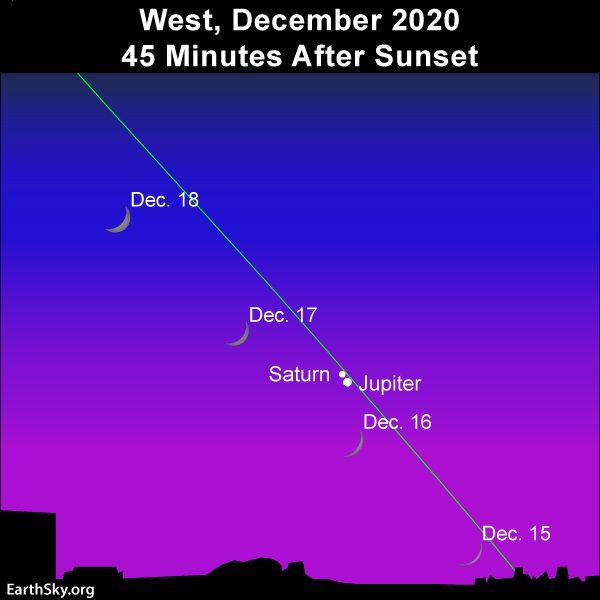
EarthSky.org
In what astronomers are calling a great conjunction, or the meeting of the two biggest worlds in our solar system, the planets will appear perfectly aligned from Earth’s perspective and only be 0.1 degrees apart (that’s only one-fifth the diameter of the moon). The last time Jupiter and Saturn appeared this close was in 1623, just 14 years after Galileo made his first telescope and discovered the moons of Jupiter.
The true solar system alignment of these two gas giants occurred in early November, but from Earth’s perspective as it quickly orbits the sun, Jupiter and Saturn have appeared to inch closer and closer together over the past few weeks. If you take your telescope out early, the planets are already close together and setting later in the night, so you'll have ample opportunities to track their progress.
Jupiter is five times the distance of Earth from the sun—a whopping 484 million miles away. Saturn is almost double that. Because of their great distances, the massive planets take ages to make a single revolution around our sun.
Your birthday on Jupiter would happen once every 12 years, and once every 30 years on Saturn. At this rate, Jupiter aligns with Saturn every 20 years in the orbital plane of the solar system, creating a conjunction viewed from Earth. But these conjunctions don’t always appear as close as they do this year.
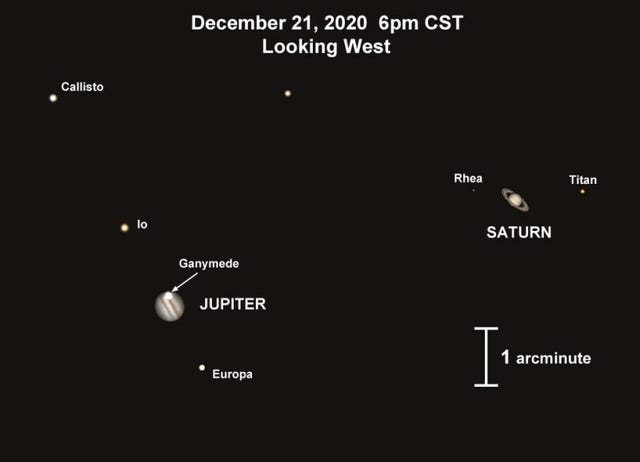
EarthSky.org
The German astronomer Johannes Kepler suggested in 1614 that a conjunction of Jupiter and Saturn occurring in 7 B.C. may be what the three wise men in the Nativity Story called the Star of Bethlehem. Whether the famed “Christmas Star” was a real astronomical event, like a planetary conjunction or comet, remains a mystery.
Jupiter and Saturn aren’t the only planets that regularly align. In 2015, Venus and Jupiter came within one-third of a degree apart.
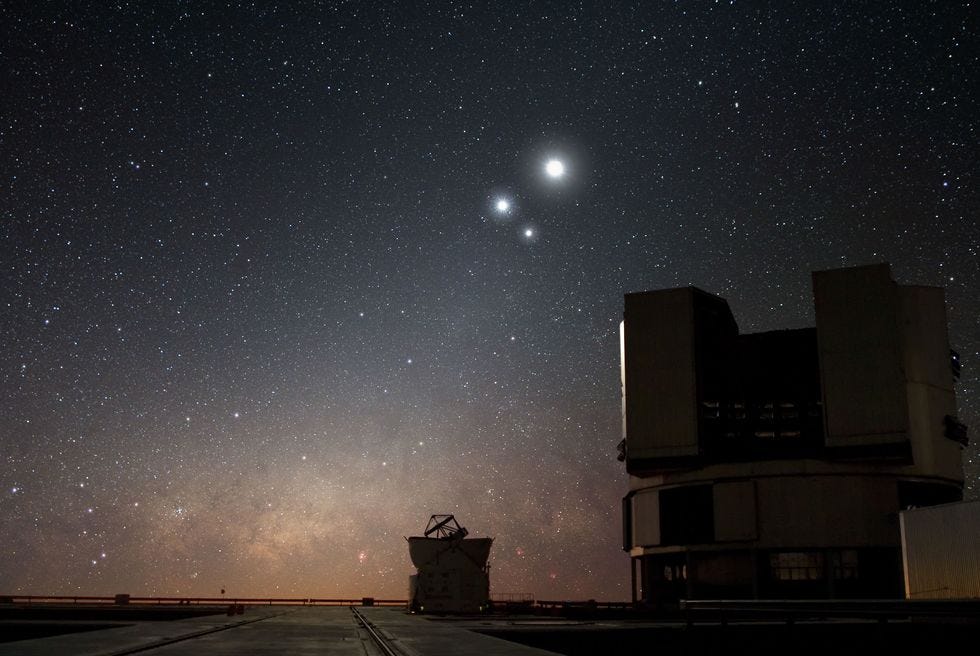
ESO/Wikimedia CommonsThe triple conjunction of Jupiter, Venus, and the Moon, viewed from ESO’s Very Large Telescope.
The best time to view the spectacle tonight will be around an hour after sunset, right near the constellation Capricorn. Get outside early for the matinee show.
🎥 Now Watch This:
